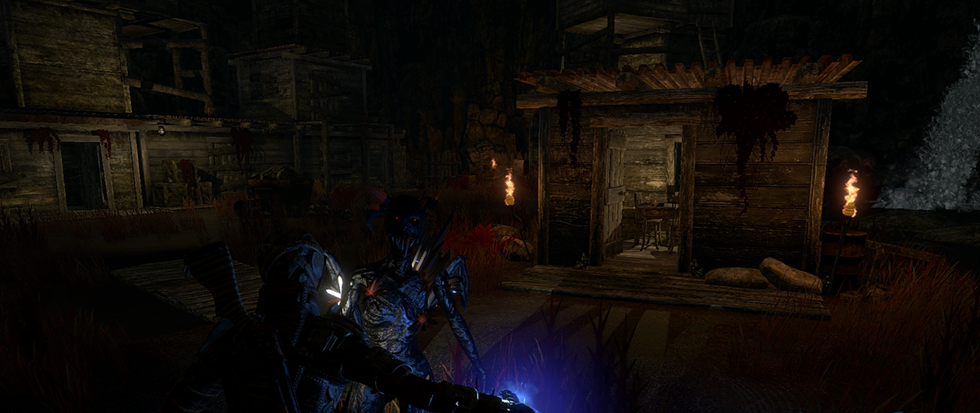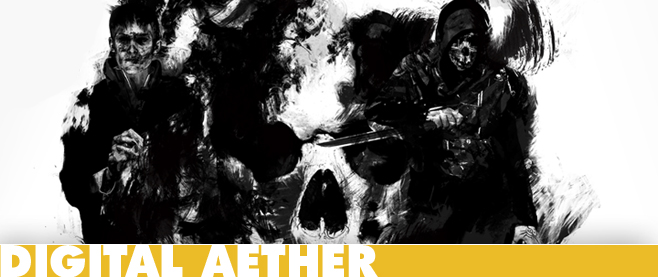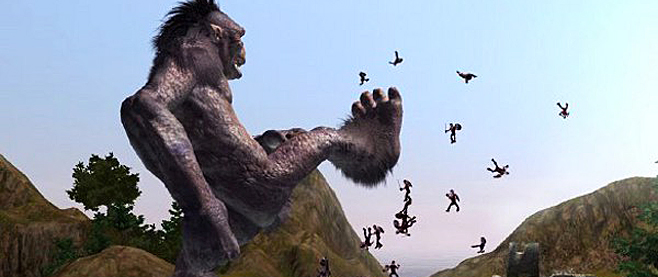
Rail Theory Stops You From Feeling Heroic
When it was released in 2013, Dead Space 3 garnered quite a bit of flak for straying from its survival horror roots. Gone was the meticulous hoarding of scarce, precious ammo, which were mostly unloaded frantically into a Necromorph when it suddenly sprung up behind; now ammunition is in abundance, and can be universally loaded on all guns. No longer was Isaac Clarke armed with single-purpose plasma cutter; in this sequel, the weapon can be now be taken apart and modified such that it functions like an assault rifle. And the dim, claustrophobic interior of the mining ship, Ishimura, is no more—Dead Space 3 features shootouts in the midst of blizzards and abandoned outposts.
Isaac Clarke is no longer a measly ship systems engineer. He’s a one-man army capable of taking down an entire military operation and stopping a planetary attack.
While being this overpowered can be breathlessly fun, the experience just doesn’t feel like a Dead Space game. The sense of impending doom and hopelessness are gone, replaced by fire fights and an in-depth weapon crafting system characteristic of action RPGs. With all that firepower at my disposal, it’s hard to feel genuinely terrified. But I want to be horrified and overwhelmed. I want to be overly cautious of every single object in the environment. I want to jump at every sound in the environment. And I want to be spooked out by even the flickers of shifting shadows.
Rail Theory, an upcoming survival horror videogame, feels like the sequel Dead Space 3 could have been. The player is the last human left stranded on a research facility, which is located on a faraway, deserted planet. Of course, hostile lifeforms that resemble mutated humans thirst for your blood, leaping out of shadows to tear out your throat. These powerful creatures can outnumber you, and a few slashes can quickly cripple your character. What’s more is that ammo is sparse and health packs even rarer, and you’ll often be reminded of how ephemeral and fragile your existence is.
Plus, preserving Rail Theory’s tense atmosphere is the game’s dynamic difficulty, which scales to your ability to deal damage accurately. Kill too effectively, and enemies later in the level may sprout a carbon plate on their heads—keeping you from nailing deadly headshots and feeling like an overpowered Isaac Clarke.

Survival horror thrives on weakening their players by making them feel that they are far less in control of their surroundings. But while the dark, oppressive and maze-like setting of Rail Theory obfuscates your field of vision, which adds to the gnawing sense of helplessness, the environment also seems rehashed and uninspired at certain points. It makes exploration unfulfilling and dampens the scenes of wary, quiet exploration—scenes that usually elevates the eerily silent moments of survival horror to unsettling heights. Unfortunately, once you’ve seen an abandoned bunk, you’ve seen them all, and I can’t help but feel that this is a missed opportunity for some incredible environmental story-telling. Nonetheless, since Rail Theory is still in development, it’s an aspect of the game I’m keen to see improved on.
After fiddling with the demo for about an hour or so, I’m interested in seeing how the rest of the game will pan out. I’ve been itching for a spook fest ever since Dead Space 3, and Rail Theory—if done right—seems to be able to fit the bill. Find out more about this project through its Kickstarter page.





